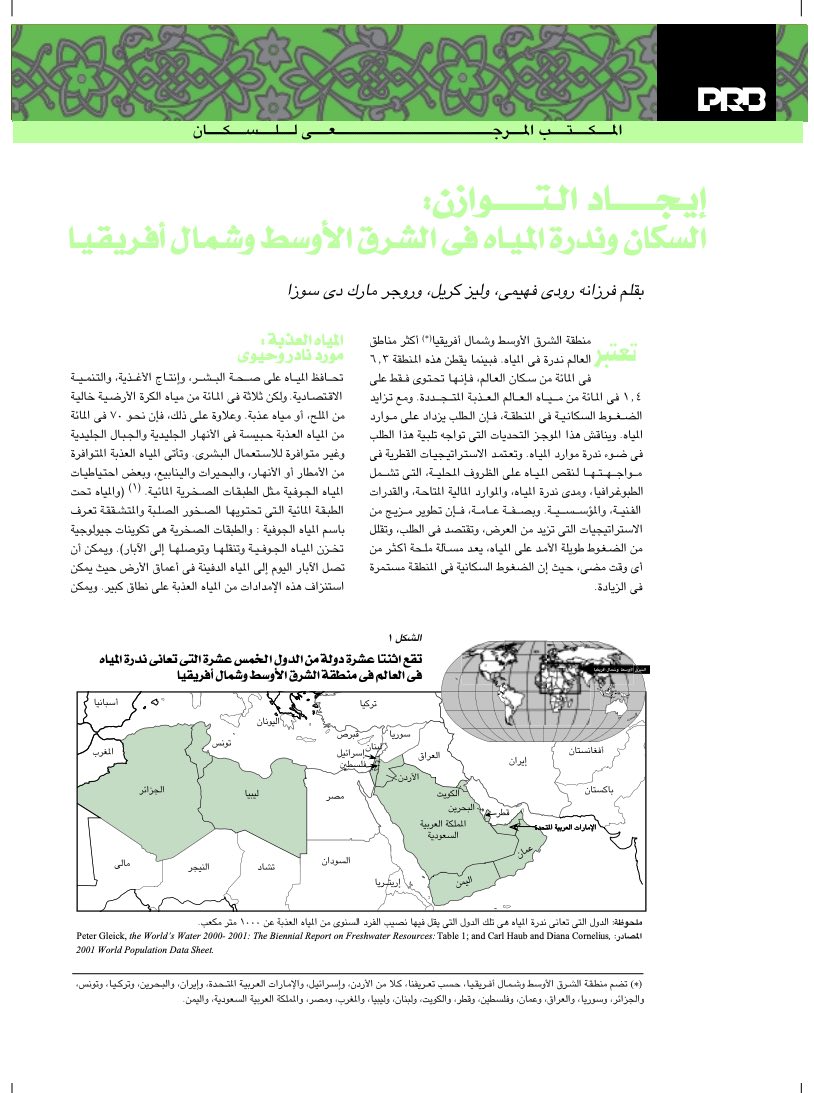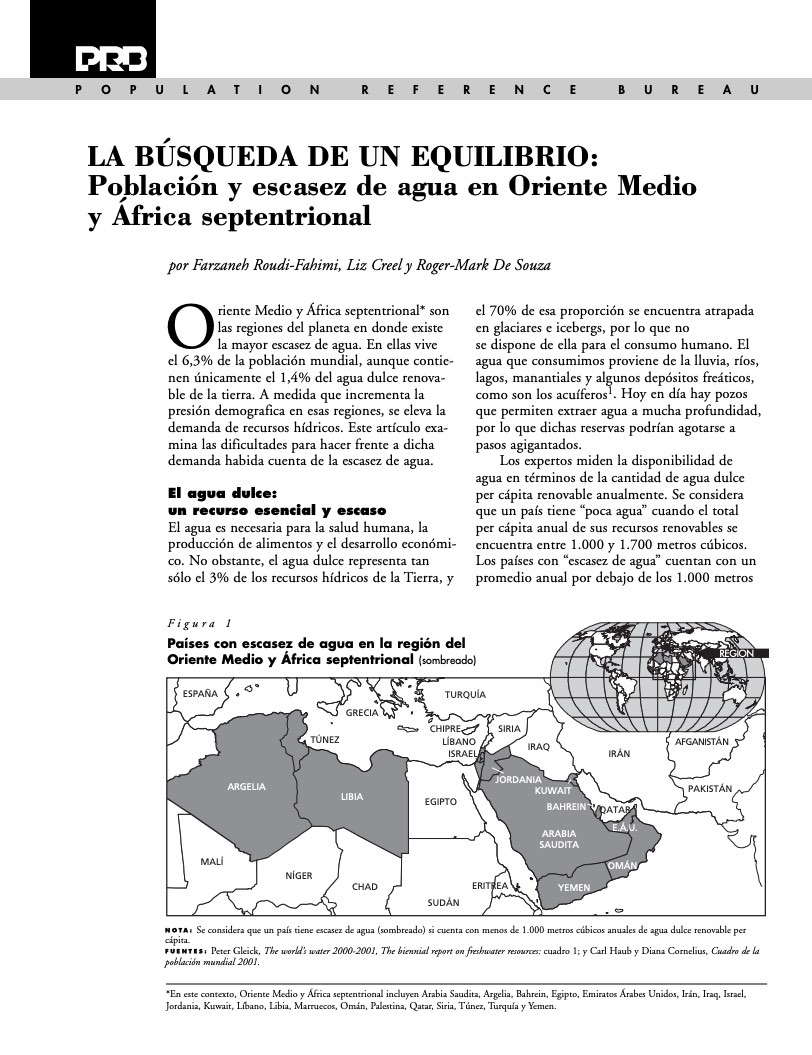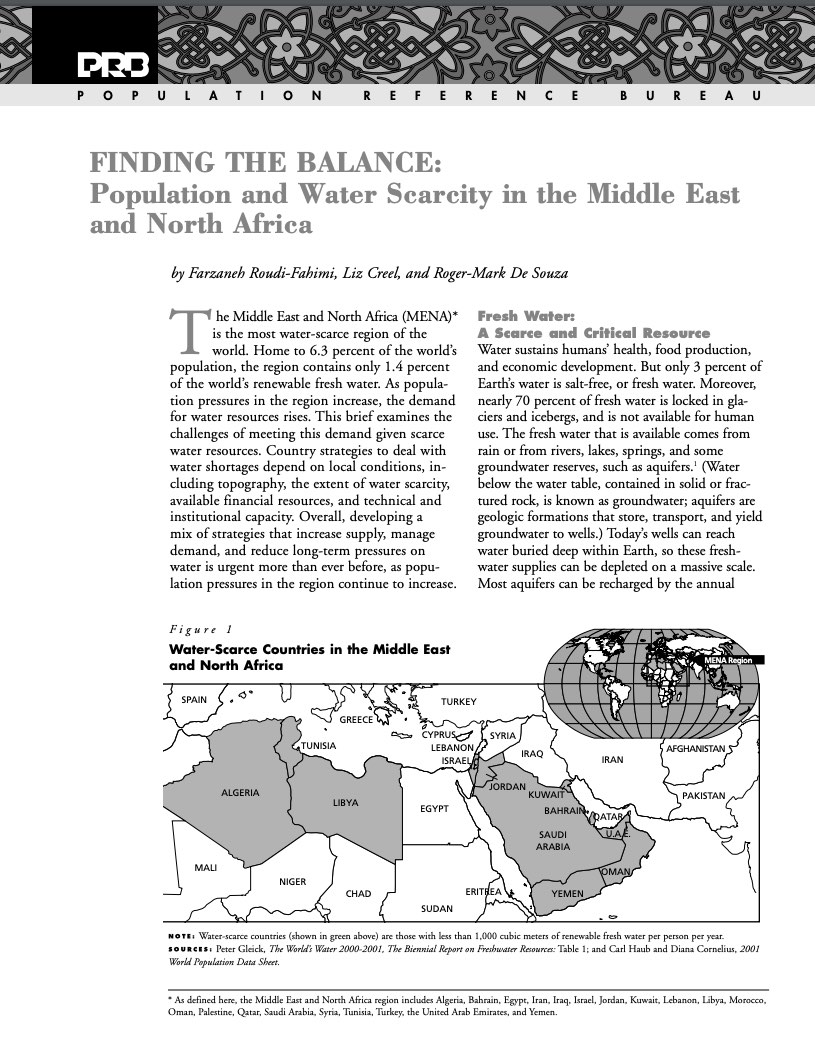Shifting Latino Ethnic and Racial Identity
(2010) Over the past several decades, the U.S. Census Bureau has used variations in its attempt to classify and enumerate Latinos.
(2010) Over the past several decades, the U.S. Census Bureau has used variations in its attempt to classify and enumerate Latinos.
(2006) The United States is set to reach a milestone in October. Joining China and India, it will become the third country to be home to at least 300 million people.

Project: Demography and Economics of Aging and Alzheimer’s Disease
Older Black adults are less likely than their white peers to have private insurance and more likely to rely on Medicaid or Medicare as their only health insurance.

(2002) The Middle East and North Africa (MENA)* is the most water-scarce region of the world. Home to 6.3 percent of the world's population, the region contains only 1.4 percent of the world's renewable fresh water.

Income, neighborhood characteristics, and state policies may underly racial disparities in who gets needed care, despite federal efforts to expand home-care programs.

(2002) The Middle East and North Africa (MENA)* is the most water-scarce region of the world. Home to 6.3 percent of the world's population, the region contains only 1.4 percent of the world's renewable fresh water.
Investments in young people are crucial to achieving a demographic dividend. The demographic dividend provides a framework for promoting investments in youth as fertility declines and population age structure changes. Sustained investments in voluntary family planning, health, education, and job growth can help to guide a country towards a demographic dividend.
(2009) De par le monde, les jeunes – surtout les jeunes femmes – connaissent un fort taux de VIH et de grossesse non désirée à cause de leurs connaissances limitées concernant la santé sexuelle et reproductive.
The introduction of water filtration and chlorination in major U.S. cities between 1900 and 1940 accounted for about one-half of the 30 percent decline in urban death rates during those years, according to research published in the February 2005 issue of the journal Demography.

(2002) The Middle East and North Africa (MENA)* is the most water-scarce region of the world. Home to 6.3 percent of the world's population, the region contains only 1.4 percent of the world's renewable fresh water.